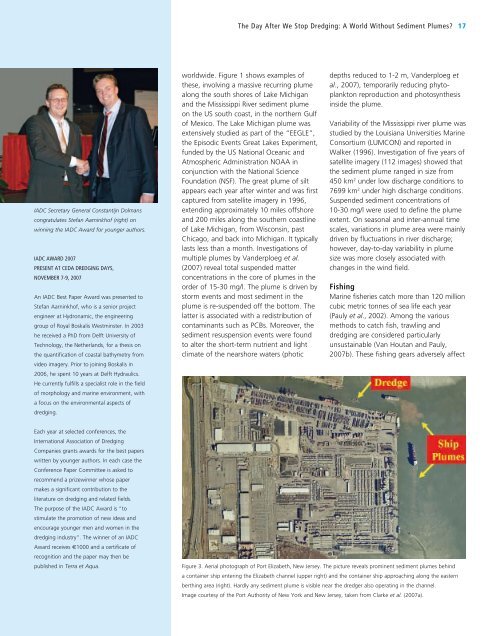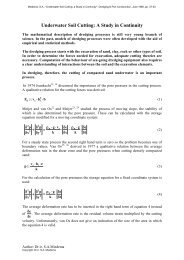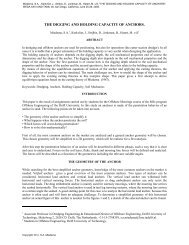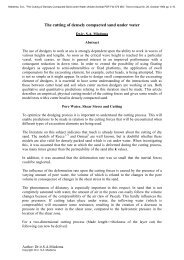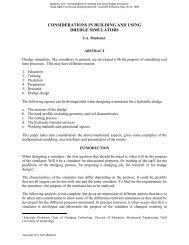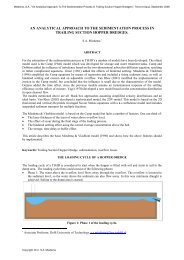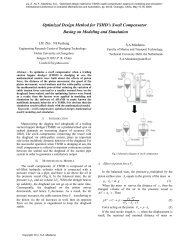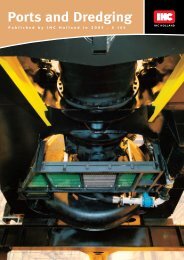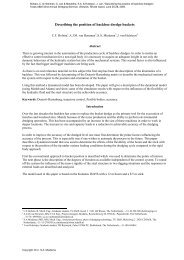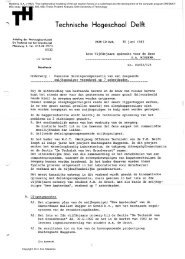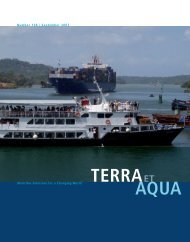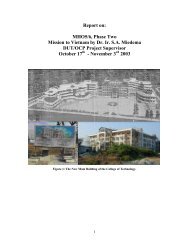The rock manual - Dredging Engineering Research Laboratory
The rock manual - Dredging Engineering Research Laboratory
The rock manual - Dredging Engineering Research Laboratory
Create successful ePaper yourself
Turn your PDF publications into a flip-book with our unique Google optimized e-Paper software.
<strong>The</strong> Day After We Stop <strong>Dredging</strong>: A World Without Sediment Plumes? 17IADC Secretary General Constantijn Dolmanscongratulates Stefan Aarninkhof (right) onwinning the IADC Award for younger authors.IADC AWARD 2007PRESENT AT CEDA DREDGING DAYS,NOVEMBER 7-9, 2007An IADC Best Paper Award was presented toStefan Aarninkhof, who is a senior projectengineer at Hydronamic, the engineeringgroup of Royal Boskalis Westminster. In 2003he received a PhD from Delft University ofTechnology, the Netherlands, for a thesis onthe quantification of coastal bathymetry fromvideo imagery. Prior to joining Boskalis in2006, he spent 10 years at Delft Hydraulics.He currently fulfills a specialist role in the fieldof morphology and marine environment, witha focus on the environmental aspects ofdredging.worldwide. Figure 1 shows examples ofthese, involving a massive recurring plumealong the south shores of Lake Michiganand the Mississippi River sediment plumeon the US south coast, in the northern Gulfof Mexico. <strong>The</strong> Lake Michigan plume wasextensively studied as part of the “EEGLE”,the Episodic Events Great Lakes Experiment,funded by the US National Oceanic andAtmospheric Administration NOAA inconjunction with the National ScienceFoundation (NSF). <strong>The</strong> great plume of siltappears each year after winter and was firstcaptured from satellite imagery in 1996,extending approximately 10 miles offshoreand 200 miles along the southern coastlineof Lake Michigan, from Wisconsin, pastChicago, and back into Michigan. It typicallylasts less than a month. Investigations ofmultiple plumes by Vanderploeg et al.(2007) reveal total suspended matterconcentrations in the core of plumes in theorder of 15-30 mg/l. <strong>The</strong> plume is driven bystorm events and most sediment in theplume is re-suspended off the bottom. <strong>The</strong>latter is associated with a redistribution ofcontaminants such as PCBs. Moreover, thesediment resuspension events were foundto alter the short-term nutrient and lightclimate of the nearshore waters (photicdepths reduced to 1-2 m, Vanderploeg etal., 2007), temporarily reducing phytoplanktonreproduction and photosynthesisinside the plume.Variability of the Mississippi river plume wasstudied by the Louisiana Universities MarineConsortium (LUMCON) and reported inWalker (1996). Investigation of five years ofsatellite imagery (112 images) showed thatthe sediment plume ranged in size from450 km 2 under low discharge conditions to7699 km 2 under high discharge conditions.Suspended sediment concentrations of10-30 mg/l were used to define the plumeextent. On seasonal and inter-annual timescales, variations in plume area were mainlydriven by fluctuations in river discharge;however, day-to-day variability in plumesize was more closely associated withchanges in the wind field.FishingMarine fisheries catch more than 120 millioncubic metric tonnes of sea life each year(Pauly et al., 2002). Among the variousmethods to catch fish, trawling anddredging are considered particularlyunsustainable (Van Houtan and Pauly,2007b). <strong>The</strong>se fishing gears adversely affectEach year at selected conferences, theInternational Association of <strong>Dredging</strong>Companies grants awards for the best paperswritten by younger authors. In each case theConference Paper Committee is asked torecommend a prizewinner whose papermakes a significant contribution to theliterature on dredging and related fields.<strong>The</strong> purpose of the IADC Award is “tostimulate the promotion of new ideas andencourage younger men and women in thedredging industry”. <strong>The</strong> winner of an IADCAward receives €1000 and a certificate ofrecognition and the paper may then bepublished in Terra et Aqua.Figure 3. Aerial photograph of Port Elizabeth, New Jersey. <strong>The</strong> picture reveals prominent sediment plumes behinda container ship entering the Elizabeth channel (upper right) and the container ship approaching along the easternberthing area (right). Hardly any sediment plume is visible near the dredger also operating in the channel.Image courtesy of the Port Authority of New York and New Jersey, taken from Clarke et al. (2007a).


